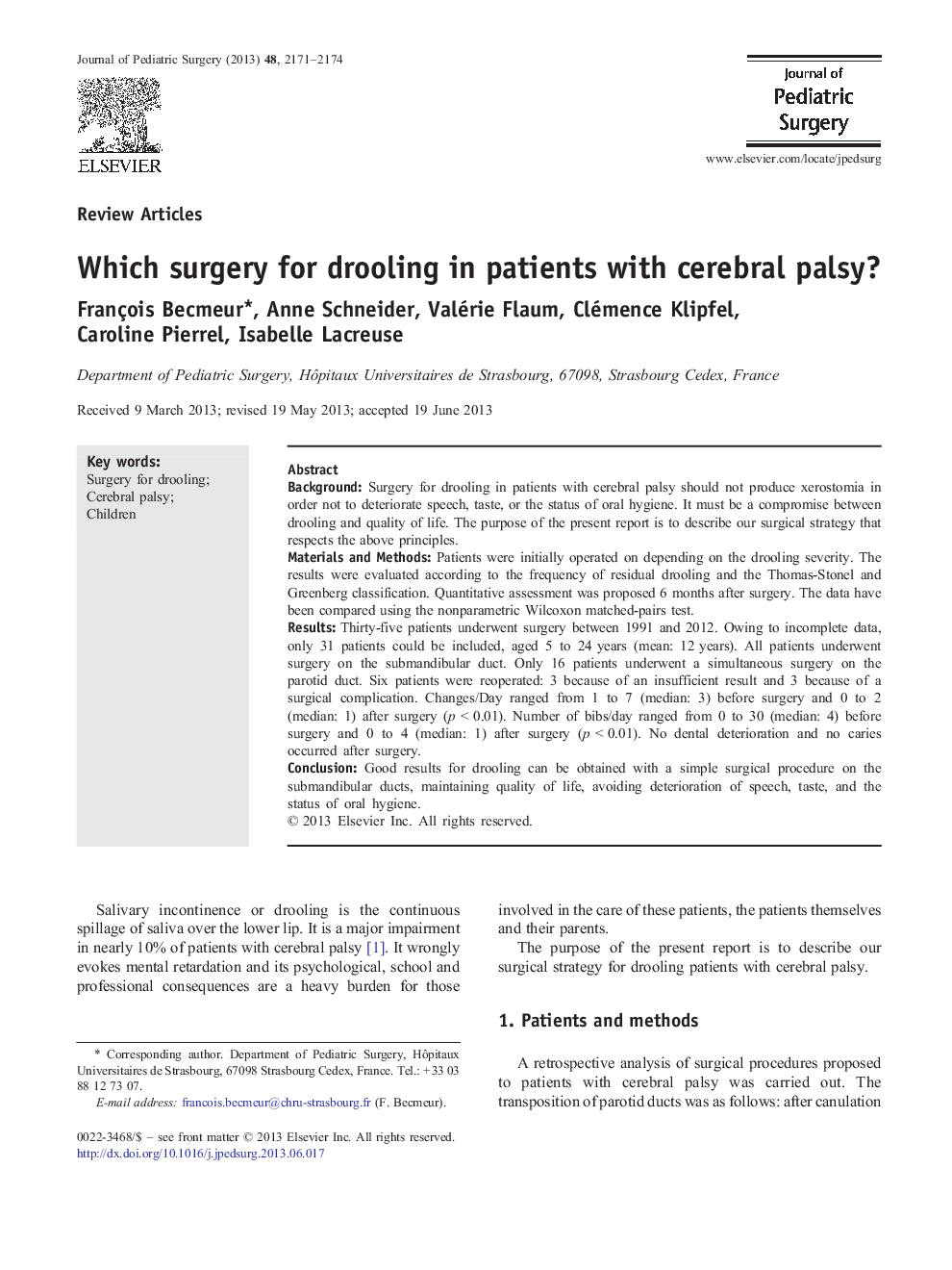| Article ID | Journal | Published Year | Pages | File Type |
|---|---|---|---|---|
| 6217219 | Journal of Pediatric Surgery | 2013 | 4 Pages |
BackgroundSurgery for drooling in patients with cerebral palsy should not produce xerostomia in order not to deteriorate speech, taste, or the status of oral hygiene. It must be a compromise between drooling and quality of life. The purpose of the present report is to describe our surgical strategy that respects the above principles.Materials and MethodsPatients were initially operated on depending on the drooling severity. The results were evaluated according to the frequency of residual drooling and the Thomas-Stonel and Greenberg classification. Quantitative assessment was proposed 6 months after surgery. The data have been compared using the nonparametric Wilcoxon matched-pairs test.ResultsThirty-five patients underwent surgery between 1991 and 2012. Owing to incomplete data, only 31 patients could be included, aged 5 to 24 years (mean: 12 years). All patients underwent surgery on the submandibular duct. Only 16 patients underwent a simultaneous surgery on the parotid duct. Six patients were reoperated: 3 because of an insufficient result and 3 because of a surgical complication. Changes/Day ranged from 1 to 7 (median: 3) before surgery and 0 to 2 (median: 1) after surgery (p < 0.01). Number of bibs/day ranged from 0 to 30 (median: 4) before surgery and 0 to 4 (median: 1) after surgery (p < 0.01). No dental deterioration and no caries occurred after surgery.ConclusionGood results for drooling can be obtained with a simple surgical procedure on the submandibular ducts, maintaining quality of life, avoiding deterioration of speech, taste, and the status of oral hygiene.
